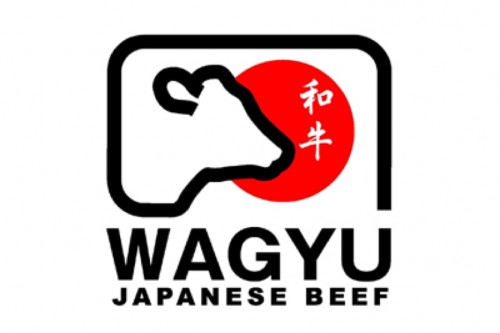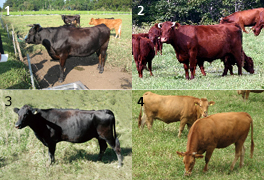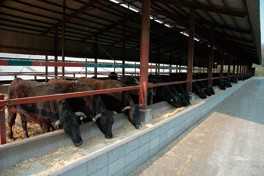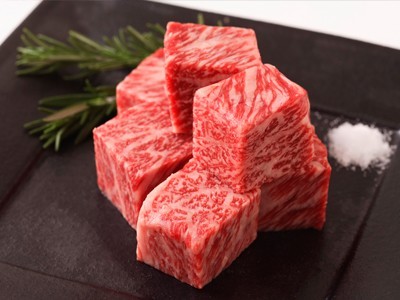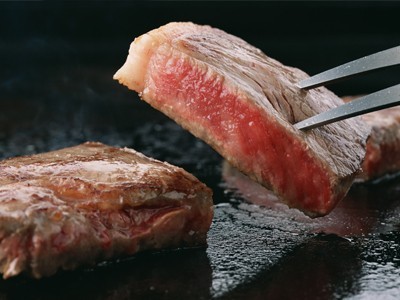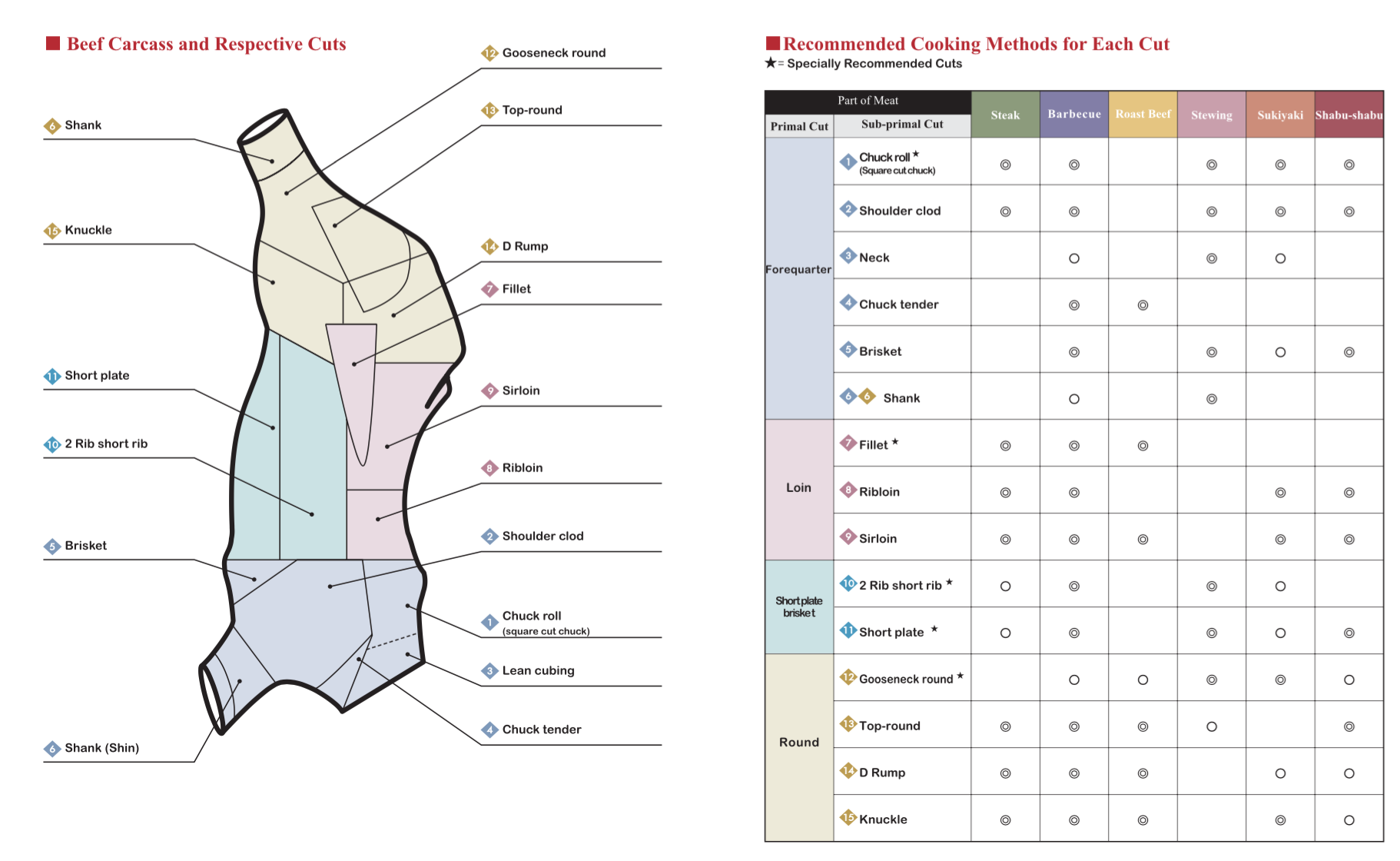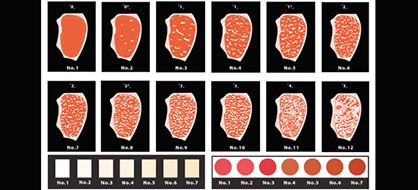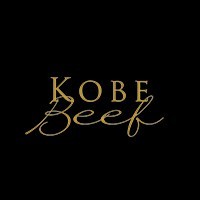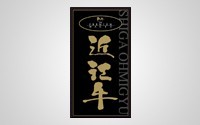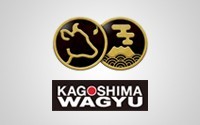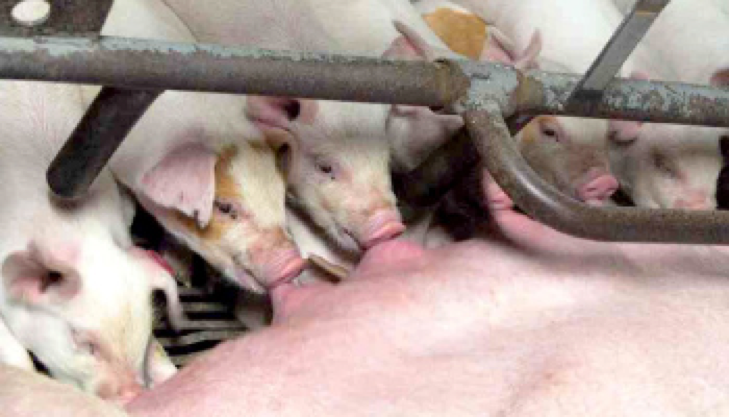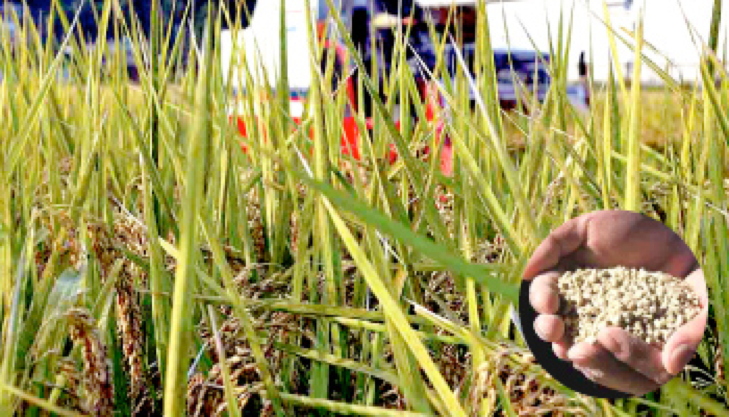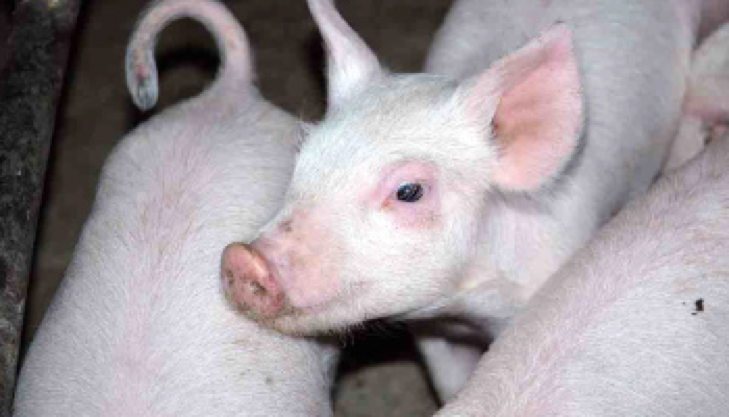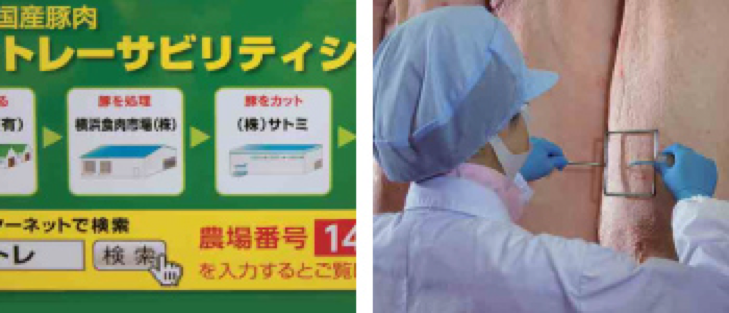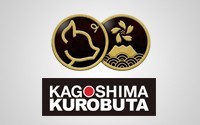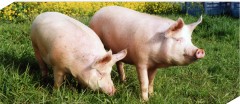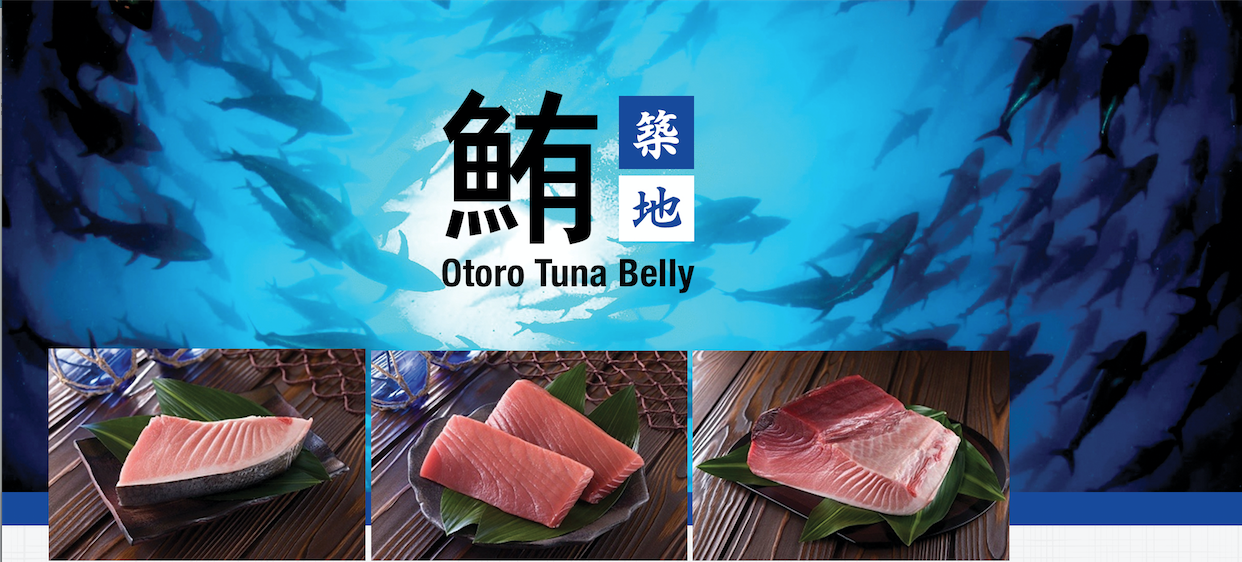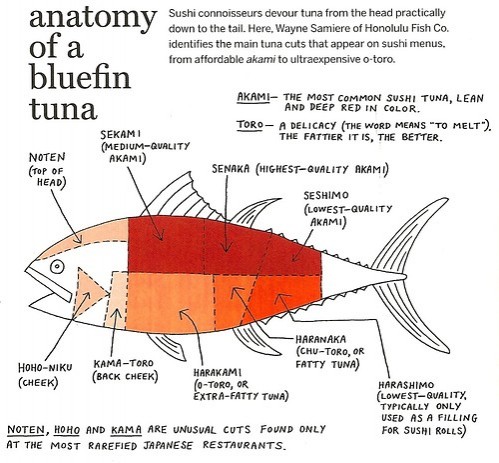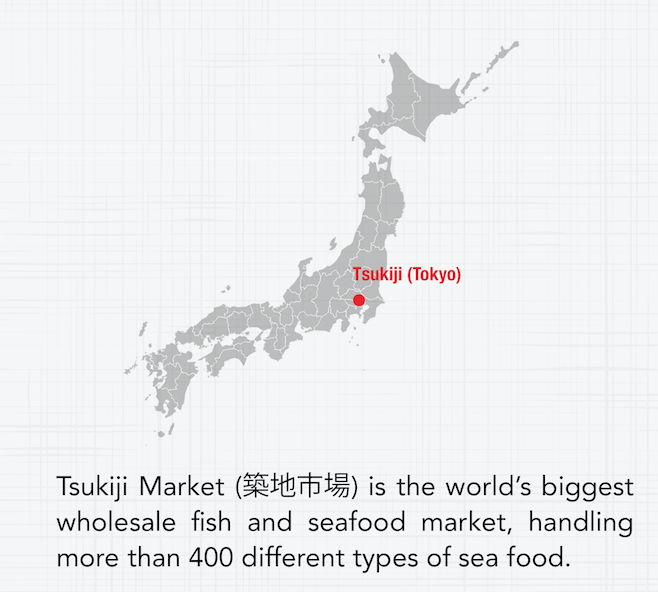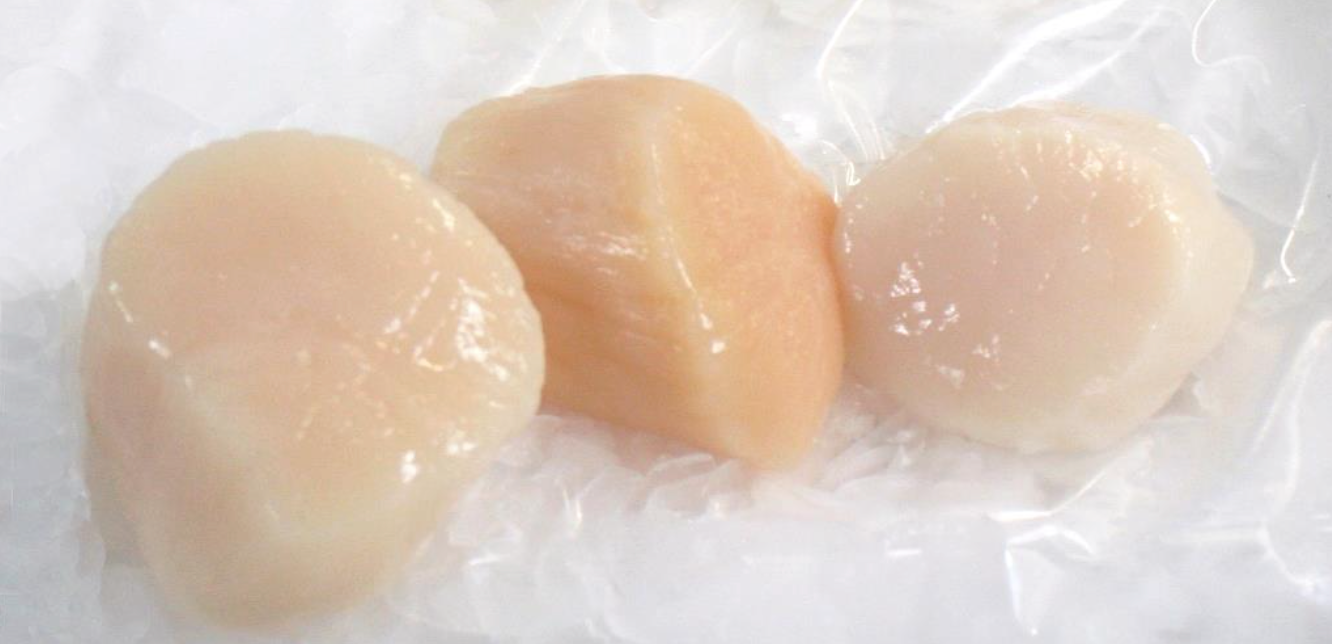Products & Brands
| Wagyu | Pork | Seafoods |
 |
 |
 |

|
The Secret to the deliciousness Japanese pork is an ingredient that provides outstanding quality and taste that Japan can take pride in. Its juicy taste and great texture are some of the reasons why Japanese food is so delicious. Japanese pork is special, varied by region because its producers are extraordinarily knowledgeable with different feeds, breeds, and regional specialties. Please be sure to enjoy the numerous taste of Japanese pork. |
||||
|
|
||||
|
Dedicated to Making it Delicious and Healthy - It all comes down to the deliciousness of the fat Determining pork deliciousness, people tend to look for meat quality such as tenderness and juiciness in its flavor. With Japanese pork, however, we also look at the flavor of the fat, how the pork melts in one's mouth, and other factors; committed to improvements, we pursue after marvelous taste beyond standard. The unparalleled Japanese pork contains a moderate amount of fatty meat; full-bodied meat has an elastic, yet tender, texture that retain juiciness well.
- Improving pork quality with unique feed Generally, Pig-feed's main components are corn and soy. In recent years, rice have been modified to become pig-feed rice; food previously gone to waste are re-purposed as organic eco-feed, valued for its bountiful nutritions.
HACCP-based quality control is implemented at processing locations, and the results of various types of inspections are stores.
During carcass processing, a small knife is used to remove bones, cartilage, tendons, etc.
|
||||
|
Searching for the unique flavor - Japan's unique pork brands In recent years, pork-brand numbers have grown, approximately 400 brands from various regions, where unique pigs are raised at individual farms. These pork brands possess unique characteristics, including color, aroma, and meat quality. In Japan, professional chefs are not the onlye ones making brand selections, homemakers are also knowledgeable in brand differentiation preferred for different dishes. Look forward to eating and enjoying all the unique tastes Japanese pork has to offer.
- Traceability and HACCP-based Quality Control Japan, consumer demand for better food safety promoted stricter quality control over the years. Farms and processing locations are implementing a variety of quality control measures, such as HACCP. For Japanese pork, however, efforts are also being taken concerning traceability, which allows pork to be tracked from when it is produced, processed and finally sent out for consumption. Thanks to consumers' demands, we searched and attempted for variety crossbreed improvements. In addition to high quality, modern consumers seek unique regional pork tastes, and select the perfect pork type for their particular dishes. This is why efforts at production locations are directed at improving Japanese pork quality. (source; J-LEC http://jlec-pr.jp/pork.html) |
||||
|
Brands
|
|
Maguro (Blue fine Tuna) -Delicious Otoro Sushi Throughout Japan, all of the blue fine tuna happen to be graded from the quality of the slices of oily meat which are extracted from them, especially the highly valued toro, typically the oily belly from the tuna. Tuna for the purpose of sushi happens to be meticulously taken care of, to make certain that the entire flesh will not be bruised or hamed. Once the raw tuna gets to the actual seafood marketplace, center examples of the tissue are generally obtained using a unique instrument in order for the pigment, consistency, and flavor from the meat to be evaluated prior to the tuna being valued. Although sushi includes many various tuna types such as yellow tail as well as big eye, excellent quality otoro is simply obtained from only the blue fin tuna. Otoro is taken from the actual under-belly inside the tuna, and it is by itself separated into grades which happen to be recognized according to the marbling throughout the steak, very similar to inside grading beef. By far the most precious o-toro or otoro, comes from the lower belly of the fish towards the head. Chutoro, a lower topp quality, derives from the tuna belly at the center and rear through the tuna, which is not as much marbled when compared with otoro sushi. Often the unique and delicious taste of otoro charms the majority of people as soon as they sample it. The amazing sirion feel of raw tuna fuses together with the fatty tissue from the belly to generate a rich and creamy experiencing inside the mouth, along with the flesh from the tuna evaporating while you indulge in it. Otoro is frequently included with sashimi and additionally nigiri sushi, mainly because the sophisticated essence, fantastic composition, and exquisite marbling are usually plainly recognized throughout these two pair of raw specieis of fish dishes. Additionally it is generally used to produce seared hard to find tuna, that features a delectable pleasant prepared surface along with a rich and creamy amazing interior. An exceptional part of otor is going to be soft pink together with vibrant white colored lines. Otoro comes with a lot of delicious oily lines, which typically give it that distinctive and magnificant tastiness. Chutoro is normally much less veined by means of fat, even though it remains a lot more oily compared with pieces from the higher area from the fish, including akami. Otoro is definitely most tasty throughout the winter months, once tuna acquire additional body fat, and might not be as incredibly tasty when out of season. It needs to talways be consumed fresh, mainly because it doesn't last lengthy amounts of frozen periods. Amazingly, o-toro sushi is not commonly consumed outside of Japan, even though it is oftentimes accessible in specialized Japanese dining establishments along the shorelines of America as well as in certain parts associated with Countries in Europe. Otoro represents a most enjoyable part of dining found in Japan, and a large number of blue fin tuna farmed all over the world land in typically the fish marketplaces linked to Japan, exactly where the o-toro will undoubtedly receive a more expensie price tag amongst sushi enthusiasts. (source;Otoro.com http://otoro.com) |
|
|
|
Blue fine Tuna Sushi Anatomy
|
|
Hokkaido Scallop This famous scallop lives up to its name. The Hokkaido scallop is tender, sweet, and creamy - the flavor is incomparable. The scallops are frozen in Japan, and undergo a natural thawing to retain texture and moisture without any chemicals and without adding weight to the product. While they are available year round, spring offers more flavorful scallops, while winter offers firmer scallops. Seared or raw, this product cooks very well. |
|
|

